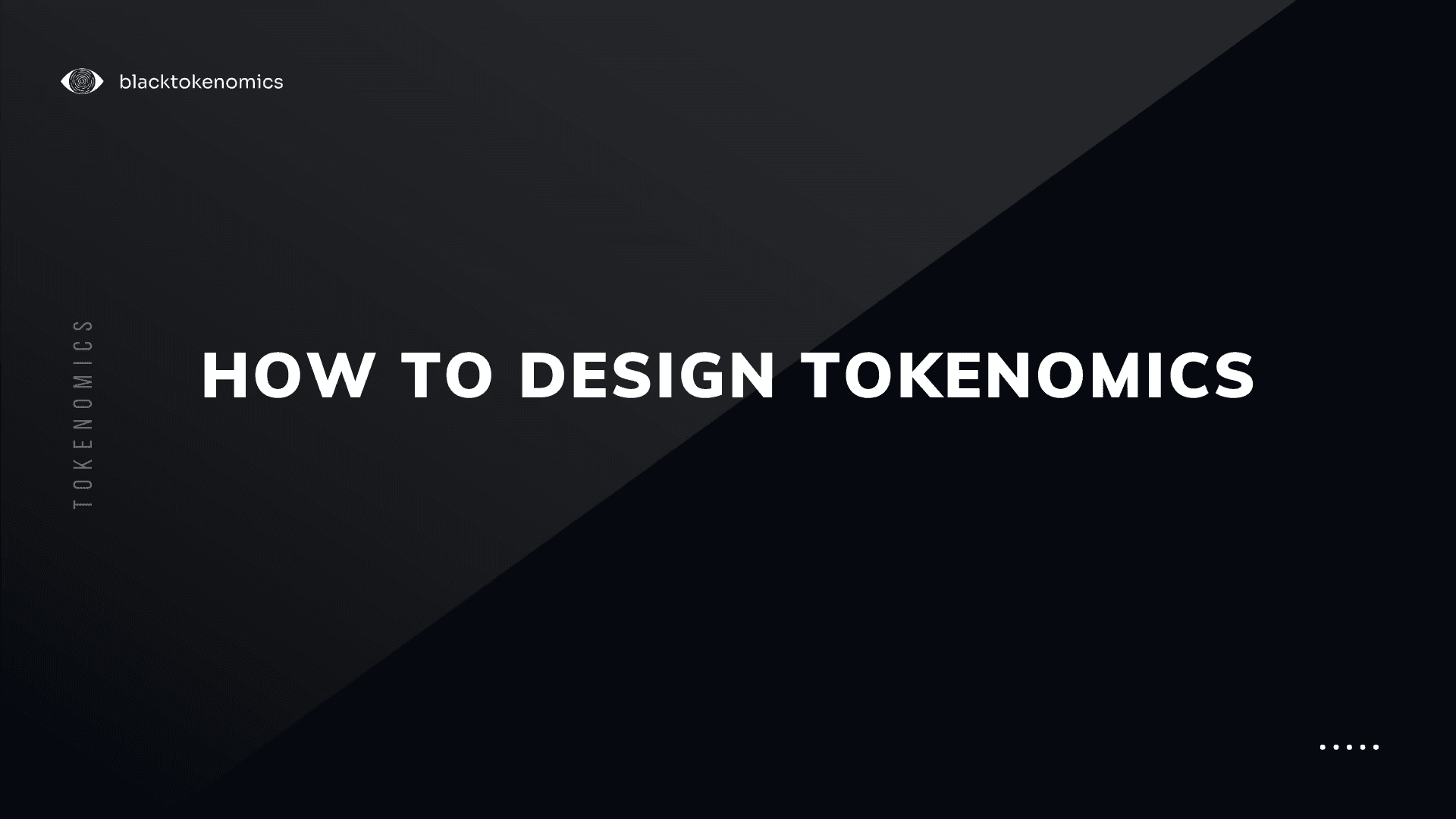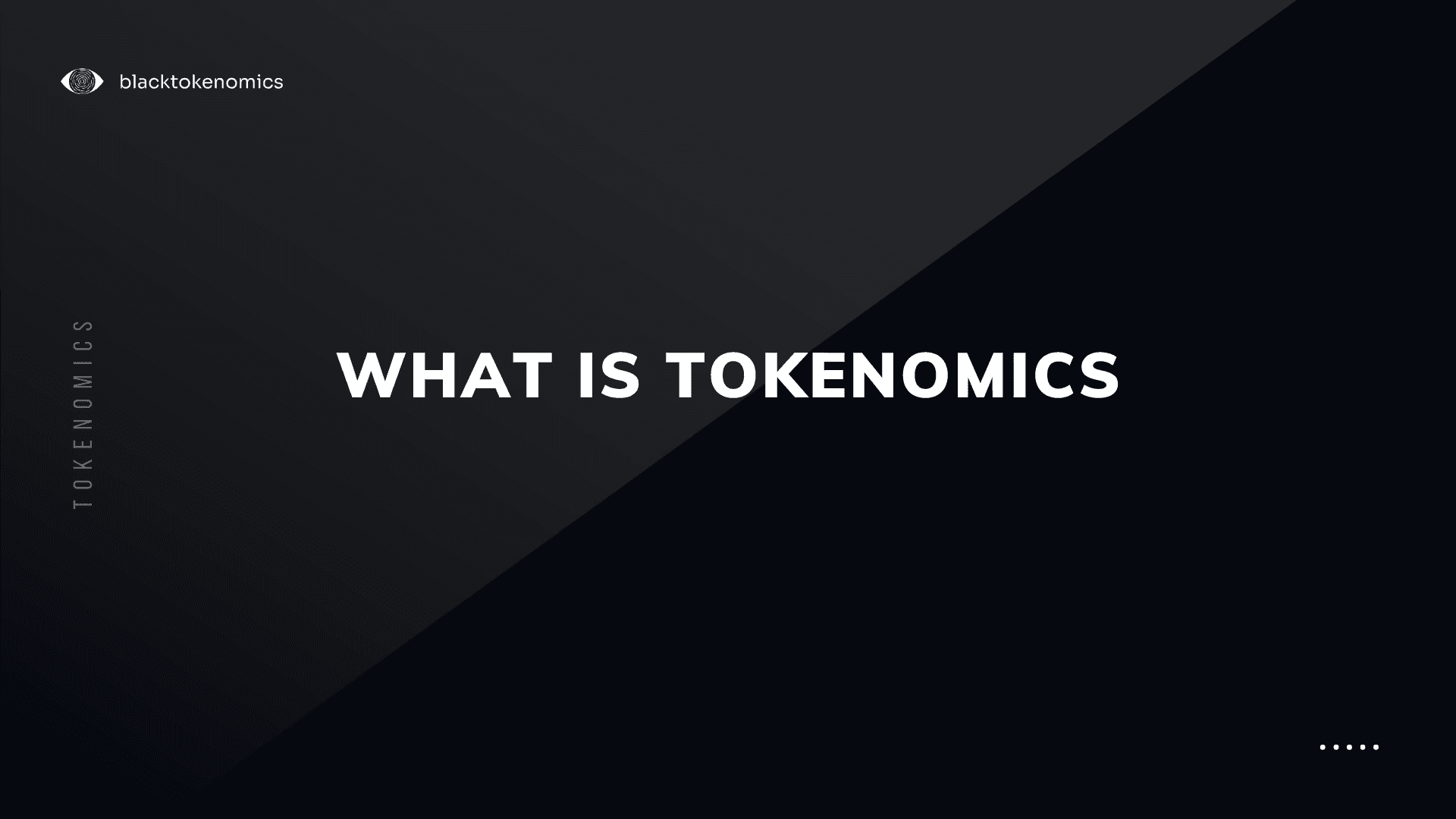
Sven
Welcome to the forefront of the gaming revolution – the dynamic world of crypto games, where the art of designing tokenomics is not just a skill but a crucial driver of success and longevity.
Are you curious about the role of tokenomics in this digital realm? Do you ponder over the choice between a single or dual token model and its impact on the gaming ecosystem? You’re not alone.
As crypto games continue to evolve at a breakneck pace, understanding the intricacies of tokenomics has become more important than ever.
This guide provides insights into designing an effective tokenomics model that appeals to players, developers and investors alike.
Understanding Tokenomics in Crypto Games
What is Tokenomics
Tokenomics a blend of ‘token’ and ‘economics’, the study of economic systems of cryptocurrencies, tokens, and NFTs, is essential in crypto games for attracting and retaining users, ensuring a balanced economy, and determining long-term potential.
A well-designed tokenomics model ensures that the game remains engaging, profitable, and sustainable over time, aligning the interests of all stakeholders - players, developers, and investors.

Why Tokenomics Matters in Crypto Gaming
Driving Player Engagement: Tokenomics directly influences how players interact with the game. Well-designed token systems incentivize gameplay, reward participation, and enhance the overall gaming experience.
Economic Sustainability: The longevity of a crypto game heavily relies on its economic model. Tokenomics ensures a balanced, sustainable economy that can adapt to changes in player behavior and market dynamics.
Aligning Stakeholder Interests: From developers and players to investors, tokenomics aligns the interests of all parties involved. It creates a harmonious ecosystem where each stakeholder’s contribution is recognized and rewarded.
Innovation and Growth: As the crypto gaming industry evolves, tokenomics paves the way for innovative business models and growth opportunities. It allows games to tap into new markets and demographics, expanding the reach and impact of blockchain technology in gaming.
Token Fundamentals of Crypto Games
To design a thriving crypto game economy, it is essential to consider key fundamentals, such as:
Aligning Project Goals with Stakeholders
Define the utility of the token
Token Supply Metrics
Monetary Policies
Allocation Distribution
Vesting Schedule
Single vs. Dual Token Systems
Advanced Tokenomics for Crypto Games
Aligning Project Goals with Stakeholders

A successful tokenomics model offers well-designed incentives for all stakeholders:
Players: Rewards for participation, achievements, and contributions to the game ecosystem.
Developers: Incentives for continuous development and maintenance of the game.
Investors: Potential for returns on investment, either through token value appreciation or revenue-sharing models.
By clearly understanding and addressing the motivations of each stakeholder group, you can create a tokenomics model that appeals to all participants, ensuring a rewarding experience and a sustainable game economy.
This deep understanding of target audience, business model and objectives of the project forms the foundation for the remaining steps in designing your crypto game’s tokenomics model.
Defining Token Utility in the Gaming Ecosystem
Tokens in crypto games serve multiple purposes:
Transactional: Used for buying, selling, or trading in-game assets.
Governance: Allowing players to vote on key game decisions, fostering a sense of community and ownership.
Incentivization: Rewarding players for achievements, participation, or contributing to the game’s development.
Investment: Offering opportunities for financial returns, either through token appreciation or revenue-sharing models.
Understanding these different token utilities is mandatory for designing a tokenomics model that aligns with your game’s objectives and player expectations.
Token Supply Management

Effective token supply management is a pivotal aspect of maintaining the value and stability of your game’s token. It involves making strategic decisions about various supply-related factors that directly impact the game’s economy and the token’s market perception.
Key Decisions in Token Supply Management:
Max Supply: Determining the maximum number of tokens that will ever exist. This decision influences the perception of scarcity and value of the token.
Circulating Supply: Managing the number of tokens currently available for use and trading. This directly affects the token’s market price, as Price = Market Cap / Circulating Supply.
Token Inflation: Monitoring the increase in circulating supply over time is essential to control the token’s purchasing power and prevent devaluation.
Token Burning: Implementing mechanisms to periodically remove tokens from circulation helps in controlling inflation and enhancing token value.
Large vs. Low Token Supplies: A larger supply can create a perception of affordability and increase liquidity, while a smaller supply can create a sense of scarcity and exclusivity, potentially raising the token’s value.
Initial Circulating Supply and Unlocks: Defining the initial circulating supply at the Token Generation Event (TGE) and managing token unlocks are vital. Unlocks can lead to supply shocks affecting the token’s price, so they must be planned carefully to ensure market stability.
Vesting and Emissions: Structuring the vesting period and emission rates of tokens is key to balancing the influx of new tokens into the market, aligning with the game’s long-term economic goals.
Careful planning of token supply helps prevent issues like over-saturation or scarcity, ensuring a balanced economy that rewards players and maintains investor interest.
Crafting Monetary Policies
Allocation Distribution

The next step is to strategize the distribution of tokens. This involves deciding how tokens will be allocated across the ecosystem, including players, developers, investors, and other stakeholders.
The allocation should support the game’s long-term growth and ensure a fair and balanced economy.
Key Considerations in Token Allocation
Alignment with Project Goals: The distribution strategy must reflect the game’s mission and vision. For instance, in a gaming platform, tokens might be distributed to incentivize actions from both game developers and players, ensuring active participation and contribution to the ecosystem.
Attractiveness to Investors: The allocation strategy should appeal to both private and public investors while being perceived positively by the community and retail investors. It’s about striking a balance between economic viability and market appeal.
Fair and Equitable Distribution: Ensuring fairness in token distribution is crucial to prevent centralization risks and governance issues. This involves equitable distribution among insiders (team, advisors, early investors), public sale participants, community members (users, developers, supporters), and foundation reserves.
Public Sale: Tokens available for general public purchase.
Community: Allocations for ecosystem development, airdrops, and rewards to foster engagement and growth.
Insiders: Allocated to the team, advisors, and early investors, reflecting their commitment and alignment with the project’s vision.
Foundation: Supports ongoing operations and project execution, including reserves, liquidity, grants, and R&D.
Vesting Release Schedule

Token lockup and vesting periods are often implemented in conjunction with token distribution strategies to stabilize token demand.
These periods restrict token holders from selling their tokens for a certain timeframe, ensuring that the interests of the development team, investors, and community members are aligned, and preventing the rapid sale of tokens into the market.
The Role of Vesting in Market Stability
Vesting schedules and lockup periods are essential for incentivizing alignment between developers, insiders, and token buyers. They help prevent price volatility caused by early investor sell-offs and allow for planned anticipation of significant token unlock dates.
Key Elements of the Vesting Schedule
Token Generation Event (TGE): This is the pivotal moment when a project’s token is first introduced on an exchange. It marks the beginning of token availability for investors and other stakeholders.
Cliff Period: This is a predefined duration during which token recipients must wait before receiving their tokens. Commonly applied to the project team and early investors, the cliff period precedes the actual vesting schedule, serving as a lockup time to align long-term interests.
Vesting Types:
Linear Vesting: Tokens are released in equal proportions over a set period, providing a predictable and steady influx of tokens into the market.
Twisted or Graded Vesting: This approach involves a non-linear distribution of tokens over various time intervals, often used by major projects to manage token pricing and market impact.
Single vs. Dual Token Systems in Crypto Games
The structure of the token system plays a pivotal role in defining the game’s economic model and user experience. Typically, games employ either a one-token or a two-token system, each with its unique advantages and considerations.
The Two-Token Model
A dual token system involves two distinct types of tokens within a game’s economy. Typically, one serves as a utility token, facilitating in-game medium for exchange, transactions and activities, while the other acts as a security token, often linked to governance and investment aspects.
Fixed Supply Token (FST): This token, akin to a security or investment, is meant to accrue value over time. It’s often used for governance, giving holders a say in the game’s future direction. However, its primary role can often lean towards investment, with its value driven by market speculation and game popularity.
Variable Supply Token (VST): This token is the lifeblood of the game’s economy, used for in-game transactions, rewards, and mechanics. Its supply can be adjusted by the developers to maintain economic balance within the game.
The separation allows for a stable gaming environment where in-game economics aren’t directly affected by external market speculation. However, challenges arise when the popularity wanes, leading to questions about the FST’s long-term value and utility.
An example of game successfully implementing a Dual Token Model is Axie Infinity.
Advantages of Dual Token System:
Enhanced Governance: The security token allows stakeholders to participate in decision-making processes, fostering a more democratic and effective governance structure.
Regulatory Clarity: By separating utility and security functions, dual token systems can navigate regulatory landscapes more efficiently, with security tokens adhering to specific securities regulations.
Broader Investor Access: This system appeals to a diverse range of investors, accommodating both accredited and non-accredited participants.
User Incentivization: Utility tokens incentivize players for their engagement and contributions, such as staking, voting or participating in network activities.
Flexible Monetization Models: The separation of utility and security aspects enables diverse revenue generation strategies, from accessing network features to equity or profit-sharing schemes.
Challenges and Considerations of Dual Token System:
Complexity and Liquidity Concerns: The dual token model can introduce complexity, potentially deterring investors and affecting the tokens’ liquidity. This complexity might lead to market fragmentation, making trading and valuation more challenging.
Regulatory and Governance Hurdles: Navigating different regulatory frameworks for each token type can be challenging, and aligning the interests of diverse stakeholders might complicate governance.
Value Discrepancies: Disparities in the demand and utility of each token can lead to value imbalances, creating investor uncertainty and potential conflicts.
The One-Token Model
In contrast, a single token system employs one type of token to fulfill all roles within the game, from transactions and gameplay to governance and investment. This model offers simplicity and direct integration of the token into the game’s mechanics.
Advantages of Single Token System:
Simplicity and Accessibility: Easier for players and investors to understand, potentially leading to higher engagement and investment.
Unified Economy: A single token ensures a cohesive economic system within the game, with all activities revolving around one currency.
Regulatory Simplicity: Managing compliance for a single token can be more straightforward than juggling the requirements of two different token types.
Challenges and Considerations of Single Token System:
Balancing Multiple Roles: The token must effectively serve diverse functions, from in-game utility to investment and governance, which can be challenging to balance.
Potential for Over-Simplification: While simplicity is an advantage, it might also limit the depth and flexibility of the game’s economic and governance structures.
Developing Core Game Mechanics
Once you’ve defined the above, it’s time to develop the core game mechanics. These should be engaging, unique, and adaptable to market trends and user preferences.
Integrating blockchain technology into your game mechanics can create unique in-game items or worlds, as well as provide innovative gaming features and mechanics enabled by blockchain technology, such as NFTs, DAOs, and smart contracts.
Breeding mechanics, for example, can be used to combine existing items and create new ones, fostering a dynamic and constantly evolving game environment.
Additionally, implementing ‘play-to-earn’ and ‘play-and-earn’ mechanisms can encourage players to engage with the game and compete for rewards.
Implementing Token Dynamics
Token dynamics involve how tokens are used within the game, their interaction with the game’s economy, and their impact on player behavior.
Utility and Functionality: Whether using a single or dual token model, the utility of each token type should be clearly defined. In a dual token system, one token might serve for in-game transactions (Variable Supply Token, VST) while the other could be used for governance or investment (Fixed Supply Token, FST).
Economic Balance: Managing the supply and demand of tokens is important. This includes controlling inflation, setting appropriate emission rates, and possibly implementing token burning mechanisms to regulate the token supply.
Integration with Game Mechanics: Tokens should be seamlessly integrated into the game, enhancing the gameplay experience rather than detracting from it. This includes using tokens as rewards for player achievements and participation.
Market Adaptability
A successful tokenomics model in crypto gaming must be adaptable and responsive to both market trends and player feedback.
Monitoring and Adjusting: Regular assessment of the game’s economy and token value is essential. Adjustments may be needed to respond to market trends, economic shifts, and player behaviors.
Feedback Mechanisms: Implementing systems to gather and analyze player feedback regarding token utility and value can inform necessary adjustments, ensuring the game remains attractive and engaging.
Interested in optimizing your crypto game’s token dynamics and ensuring market responsiveness? Connect with BlackTokenomics for a strategic consultation, and let’s work together to build a robust and engaging gaming economy.
Case Studies: Successful Crypto Game Tokenomics Models
Several crypto games have successfully implemented tokenomics models that showcase the importance of well-designed tokenomics in attracting users, maintaining a balanced economy, and ensuring long-term growth. Decentraland, for example, has built its tokenomics around the MANA token, which is used for various in-game transactions, while Alien Worlds relies on the TLM token, which serves as a governance token on each virtual planet within the game.
Another successful example is Mines of Dalarnia, which uses the DAR token to play games and acquire game assets.
Case Study 1: Axie Infinity - A Dual Token Model Success
Axie Infinity, as discussed in Nat Eliason’s article, is a prominent example of a successful dual token system in crypto gaming.
Tokens Used: Axie Infinity employs two tokens – AXS (Axie Infinity Shards) and SLP (Smooth Love Potion). AXS acts as a governance token, while SLP is used for in-game transactions and rewards.
Economic Dynamics: The game cleverly separates speculative investment and governance (AXS) from the in-game economy (SLP), allowing players to engage with the game without being directly affected by market speculation.Outcome: This model has contributed to Axie Infinity’s popularity and financial success, though it also faces challenges related to balancing both tokens’ roles and maintaining economic stability.
Case Study 2: Decentraland – Single Token Utility and Governance
Decentraland offers an example of a single token system where the token serves multiple purposes within the game’s ecosystem.
Token Used: MANA is the primary token in Decentraland, used for transactions, governance, and in-game interactions.
Integration: MANA is seamlessly integrated into the game, allowing players to purchase virtual land, goods, and services, as well as participate in governance decisions.
Outcome: The use of a single token simplifies the user experience and economic model, making it accessible to a wider audience and fostering a sense of community ownership.
Next Steps in Crypto Game Tokenomics
As we conclude our comprehensive guide on designing tokenomics for crypto games, it’s important to reflect on the key takeaways and consider the next steps for developers and stakeholders venturing into this innovative and dynamic field.
Recap of Key Tokenomics Principles
Understanding Tokenomics: Grasping the fundamentals of tokenomics is essential for creating a balanced and sustainable game economy.
Choosing the Right Token Model: Deciding between a single or dual token system, or even considering a hybrid approach, is crucial and should align with your game’s objectives and player dynamics.
Effective Token Management: Implementing strategies for token supply, distribution, and pricing mechanisms is vital for maintaining economic stability and player engagement.
Aligning Stakeholder Incentives: Crafting incentives that align the interests of players, developers, and investors is key to the game’s long-term success.
Navigating Regulatory Compliance: Staying informed and compliant with evolving regulations ensures the game’s legal integrity and sustainability.
Adapting to Market and Technological Changes: Being responsive to market trends and technological advancements is essential for future-proofing your game.
Next Steps for Developers and Stakeholders
Continuous Learning and Adaptation: The world of crypto gaming is rapidly evolving. Staying informed about the latest trends, technologies, and regulatory changes is crucial.
Engaging with the Community: Player feedback and community engagement are invaluable for refining your game’s tokenomics and ensuring it meets user expectations.
Seeking Expert Guidance: Collaborating with experts in tokenomics, like BlackTokenomics, can provide the insights and support needed to navigate this complex field successfully.For those new to the concept of tokenomics or looking to solidify their understanding of its foundational principles, we recommend revisiting our primer on the subject.
Explore our comprehensive article on What is Tokenomics and How to Design Tokenomics to ensure you’re building on a solid base of knowledge.
BlackTokenomics: Your Partner in Innovation
At BlackTokenomics, we are committed to help you navigate the exciting yet challenging journey of crypto game development. Our expertise in tokenomics design makes us an ideal partner for bringing your gaming vision to life.
Embark on Your Tokenomics Journey
Are you ready to take the next step in developing your crypto game?
Contact BlackTokenomics for a comprehensive consultation. Together, we can create a gaming experience that is not only captivating and rewarding for players but also robust and sustainable in the ever-evolving world of crypto gaming.
Frequently Asked Questions (FAQ)
How to design game tokenomics?
Designing a token economy for your crypto game involves defining key participants such as players, investors and developers, determining motivation for each, creating game mechanics, designing a token economy and establishing token dynamics.Each participant has different needs and motivations, so it is important to understand what drives each of them. For example, players may be motivated by rewards, while investors may be looking for a return on their investment. Developers may be looking for a platform to showcase their skills and build a business.
What to look for in crypto tokenomics?
When evaluating crypto tokenomics, look out for utility, liquidity, fairness of distribution, and purpose. These four factors can give you a better idea of the project’s sustainability and success.
Are crypto games profitable?
Playing money-making crypto games can be profitable. P2E games allow you to earn real money.
What is basic crypto tokenomics?
Tokenomics is the law of supply and demand as it relates to crypto and NFTs, derived from the words “token” and “economics”. A token is a digital asset that can either be fungible or non-fungible.
What are the different types of tokens used in crypto games?
Crypto games utilize a variety of tokens, including utility, governance, transactional, and commodity tokens, which all have distinct functions within the game.Utility tokens are used to purchase in-game items, governance tokens are used to vote on game-related decisions, transactional tokens are used to facilitate transactions within the game, and commodity tokens are used to store value.
Sven
Sven is a digital entrepreneur with over 8 years of experience in SEO. He has helped Web3 businesses optimise their online presence online. He has a deep understanding of the Web3 space and ensures to vet all the projects BlackTokenomics works with.



